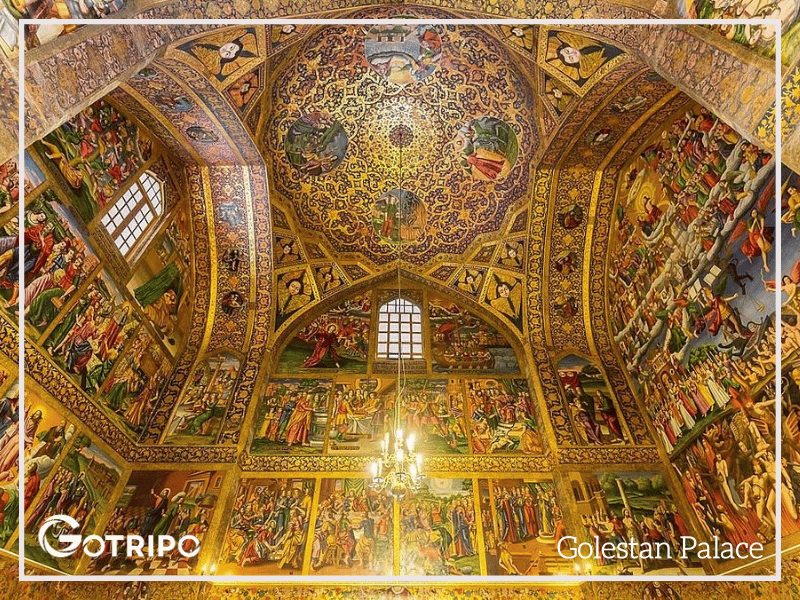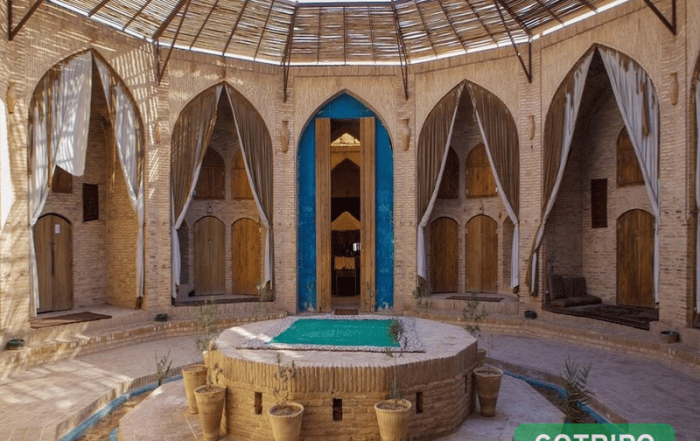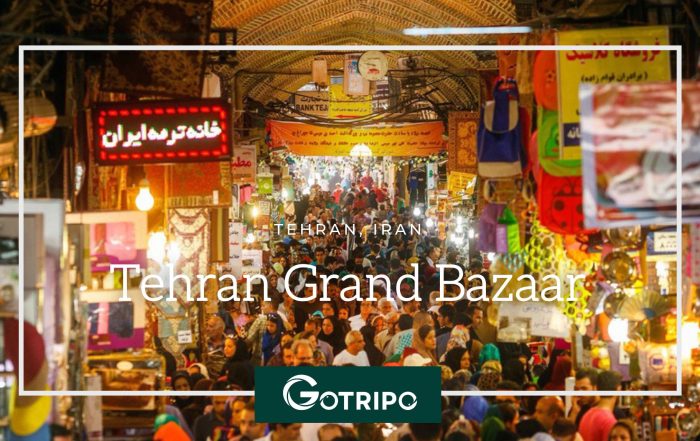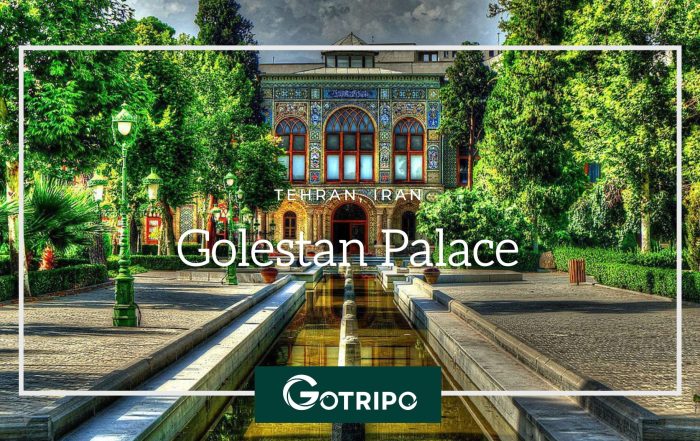Tehran Golestan Palace
In the heart of Iran’s bustling capital, Golestan Palace in Tehran is a mesmerizing emblem of Persian opulence, royal ambition, and artistic splendor. A legacy of the Qajar dynasty, this palace complex isn’t just a historic site—it’s a vivid time capsule that fuses Persian traditions with European elegance, drawing visitors into a narrative where kings once ruled and poets once dreamed.
Introduction to Golestan Palace
The Golestan Palace in Tehran isn’t just a royal residence—it’s a crown jewel of Iranian architecture and a UNESCO World Heritage Site. Located within the historical Arg or citadel of Tehran, the palace encapsulates over 400 years of Iranian history, having evolved through Safavid, Zand, Qajar, and even Pahlavi influences. Its title, “Golestan,” meaning “The Roseland” or “The Garden of Flowers,” aptly mirrors its lush gardens and aesthetic grace.
Declared a UNESCO site in 2013, it is a symbol of national pride and cultural heritage. Visitors from around the globe come to witness the blend of traditional Persian art and 19th-century European architecture in an environment that once echoed with the footsteps of royalty.

Read more: Where is the Milad Tower (Tehran) ?
History of Golestan Palace
Originally built during the Safavid dynasty, the palace gained prominence under the Qajar dynasty, especially during the reign of Fath-Ali Shah and Naser al-Din Shah. The Qajars used it not only as their residential complex but also for ceremonial and governmental purposes. This palace has seen coronations, royal feasts, diplomatic receptions, and pivotal decisions that shaped Iran’s modern history.
The 19th century brought European exposure, and kings like Naser al-Din Shah incorporated architectural elements from their travels to Europe. This added a unique layer to the palace’s identity, merging Iranian motifs with European neoclassicism and Rococo details.

Golestan Palace Architecture
The architecture of Golestan Palace Tehran is a masterclass in the confluence of Persian aesthetics and Western influences. While traditional elements such as intricate tilework, stucco decorations, and muqarnas (stalactite vaulting) dominate, European styles such as Baroque, Rococo, and Neoclassical designs appear in many parts of the complex.
Key features include wide marble staircases, mirrored walls, ornate chandeliers, gilded ceilings, and hand-painted panels. The use of large mirrors—reflecting both natural light and symbolic majesty—was inspired by French palatial interiors but executed with distinct Persian craftsmanship. Each corner of the palace narrates a story, speaking volumes about the tastes and ambitions of Qajar kings who embraced modernization while holding firmly onto tradition.
Famous Halls Inside Golestan Palace
Several halls within the palace have gained fame due to their artistic and ceremonial importance:
- Mirror Hall (Talar-e Ayeneh): Perhaps the most iconic room, this hall dazzles visitors with its intricate mirror mosaics that reflect light like a kaleidoscope. Naser al-Din Shah, enchanted by Western palaces, commissioned its construction after visiting Versailles.
- Marble Throne Veranda (Takht-e Marmar): This open-air terrace houses the famed yellow alabaster throne carved from a single block of stone. It served as the coronation platform for Qajar monarchs and later inspired the design of other throne rooms across the region.
- Brilliant Hall (Talar-e Brelian): Adorned with mirrored walls, colorful glass windows, and crystal chandeliers, the hall earned its name from the dazzling display of reflections that simulate brilliance.
Each hall played a pivotal role in courtly ceremonies, receptions, and political rituals, making them far more than decorative spaces—they were power stages of the Persian monarchy.
Persian Gardens and Courtyards
One of the defining characteristics of Golestan Palace Tehran is its exquisite gardens and courtyards, echoing the concept of “chahar bagh” or the fourfold garden—an archetype in Persian landscape architecture representing paradise.
Pomegranate trees, roses, water channels, and fountains form an oasis amid Tehran’s urban sprawl. These gardens are more than ornamental; they reflect the spiritual and philosophical ethos of Persian culture, where nature is harmonized with architecture to create a serene environment conducive to contemplation and pleasure.
Visitors are encouraged to sit by the pools, observe the changing light across the palace tiles, and imagine the royal family strolling under cypress trees, away from the political weight of the throne.
Museum Collections at Golestan Palace
Beyond its halls and gardens, Golestan Palace functions as a rich museum complex. Within its various chambers and galleries, one can find:
-
Royal Gifts from Europe – Watches, vases, swords, and furniture given to Qajar kings by European monarchs.
-
Photography Museum – A unique collection showcasing some of the earliest photographs taken in Iran. Naser al-Din Shah was one of the first monarchs in the region to take a keen interest in photography.
-
Textiles and Manuscripts – Rare Qajar documents, miniatures, and hand-woven silk fabrics.
Each exhibit allows visitors to trace the evolution of Iranian society, technology, and foreign diplomacy from the 18th to the 20th centuries.

The Qajar Dynasty’s Legacy at Golestan Palace
The Qajar dynasty (1789–1925) left an indelible mark on Golestan Palace Tehran. As the ruling family moved the capital to Tehran, they transformed this previously modest citadel into a royal compound befitting an empire.
Paintings and portraits within the palace capture the evolution of court fashion, the fusion of Persian and European military attire, and the subtle shift from absolute monarchy to constitutional influence.
Most notably, the coronations of Fath-Ali Shah, Naser al-Din Shah, and Ahmad Shah Qajar took place here. These events not only solidified Golestan Palace as a royal seat but also as a symbolic ground for Iranian nationhood.

The Marble Throne (Takht-e Marmar)
Crafted from gleaming yellow alabaster and surrounded by carved figures of lions and mythological beings, the Marble Throne is one of the most iconic relics in Iranian royal history.
Commissioned by Fath-Ali Shah in the early 19th century, this throne was both a literal and symbolic seat of power. Positioned on the verandah and surrounded by columns of floral tilework, it was the focal point for public audiences, coronations, and Nowruz festivities.
The grandeur and precision of the throne’s construction reflect Iran’s mastery of stonework and its royal court’s taste for magnificence.
UNESCO World Heritage Recognition
In 2013, Golestan Palace was officially inscribed as a UNESCO World Heritage Site, a recognition that validated its architectural and cultural significance on a global scale.
The site was selected based on criteria that highlighted:
- It’s a unique fusion of traditional Persian art with European architecture.
- It’s role as a historical and political center during a transformative period in Iranian history.
- It’s exemplary preservation of Qajar-era aesthetics and values.
Since its inscription, conservation efforts have intensified, ensuring that future generations can experience its glory firsthand.
Golestan Palace Restoration Projects
Over the decades, political unrest, modernization, and environmental wear have threatened parts of Golestan Palace. But dedicated teams of Iranian architects, historians, and artisans have painstakingly restored the complex.
Using traditional materials, ancient techniques, and digital modeling, they’ve revived deteriorated murals, restored broken tile mosaics, and reinforced aging domes and arches. These efforts are guided by Iran’s Cultural Heritage, Handicrafts and Tourism Organization in collaboration with international bodies.
The palace now stands as both a historic relic and a modern testament to cultural resilience.
Cultural Events and Exhibitions
To stay vibrant in contemporary times, Golestan Palace regularly hosts art exhibitions, cultural festivals, and academic conferences. Topics range from Persian calligraphy and tile-making workshops to Qajar photography retrospectives.
Seasonal events like Nowruz (Persian New Year) are especially magical, with traditional music performances and floral installations lighting up the courtyards.
Such programs not only attract tourists but also reintegrate the palace into the cultural fabric of modern Tehran.

How to Go to the Golestan Palace?
Golestan Palace Tehran, is strategically located in the old city center, not far from Tehran’s Grand Bazaar. The address is easy to locate via Google Maps, and the palace is accessible via the Panzdah-e-Khordad Metro Station. From there, it’s a short 5-minute walk through bustling market streets, offering a glimpse into traditional Tehran life.
If you’re driving, parking might be a challenge due to the dense urban layout. Consider using a taxi or ride-sharing app for a more convenient experience.
Nearby landmarks include:
-
National Museum of Iran
-
Imam Khomeini Mosque
Best Time to Visit Golestan Palace
The best times to visit are spring (April–June) and autumn (September–November), when Tehran’s weather is pleasant and the gardens are in full bloom. Morning hours provide the best lighting for photography and a quieter experience before tour groups arrive.
Avoid mid-summer if possible; Tehran’s scorching heat can make exploring the outdoor courtyards exhausting.
Ticket Information and Visiting Hours
As of the latest updates, Golestan Palace charges an entrance fee for both local and international visitors, with separate tickets for different halls and museums within the complex.
Typical Hours:
-
Open daily from 9 AM to 5 PM
-
Closed on national holidays like Nowruz and religious observances
Visitors should purchase a full-access ticket to get the complete experience, which includes the Mirror Hall, Brilliant Hall, and Photography Museum.

Do you wanna read more? Tabiat Bridge in Tehran (IRAN)
Photography Tips for Golestan Palace in Tehran
Golestan Palace is a dream for photographers. Here’s how to make the most of your visit:
- Golden Hour: Visit early in the morning or late afternoon for soft, natural light.
- Reflections: Use the mirrors and glass panels creatively.
- Details Matter: Focus on close-ups of tilework, ceiling art, and textures.
- Respect the Rules: Flash photography and tripods may not be allowed in certain areas.
Also, consider bringing a polarizing filter to cut glare off mirrors and glass surfaces.
Visitor Experience and Reviews
Visitors often describe Golestan Palace as a “visual poem” and a “must-see when in Tehran.” Reviews highlight:
- The palace’s serene ambiance despite the surrounding hustle.
- The richness of detail in every corner.
- The sense of stepping back into a royal chapter of Iranian history.
Families with kids will appreciate the gardens, while architecture and art lovers will find endless inspiration in the design and craftsmanship.

Architecture Comparison: Golestan vs Niavaran
While both are royal residences, Golestan Palace and Niavaran Palace reflect entirely different epochs.
-
Golestan: Qajar era, fusion of Persian and European classical.
-
Niavaran: Modernist 20th-century design, built during the Pahlavi dynasty.
Golestan is ornate, spiritual, and romantic; Niavaran is sleek, functional, and diplomatic. Each tells a different story of Iranian royalty.
Their fashion and even their correspondence reveal a hidden yet impactful side of palace life.
Conclusion
Golestan Palace in Tehran isn’t merely an architectural treasure—it’s a chronicle of Iran’s soul. Every mirror, courtyard, and mosaic speaks to a time of cultural convergence, artistic innovation, and national transformation.
Whether you’re a historian, artist, traveler, or simply curious, Golestan Palace will captivate your senses and your imagination.
FAQs About Golestan Palace in Iran
1. What is the best time to visit Golestan Palace?
Spring and autumn are ideal due to mild weather and blooming gardens.
2. Is photography allowed inside Golestan Palace?
Yes, but flash photography and tripods are restricted in certain areas.
3. How much time is needed to explore Golestan Palace?
A full tour including the museums takes about 2–3 hours.
4. Can children visit Golestan Palace?
Absolutely! The gardens and vibrant art are engaging for all ages.
5. Are guided tours available in English?
Yes, both private and group tours, are available in English and other major languages.
6. What are nearby attractions to combine with a visit?
Consider the Grand Bazaar, the National Jewelry Museum, or the National Museum of Iran.
news via inbox
Subscribe to receive the best offers, travel guides, and hot deals!










